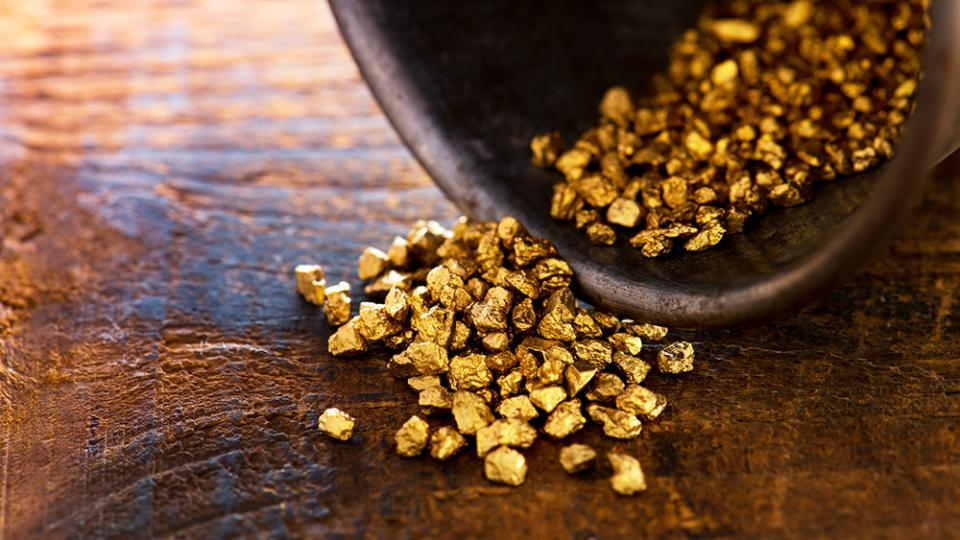
Gold gained ground in March. The war in Ukraine has put the precious metal back in the spotlight for investors. But even as the war seems to have been priced in, and interest rate hikes are expected to accelerate, gold remains in demand. What is going on here?
Gold had a weak start this year as expected interest rate hikes took flight. US real interest rates rose and the dollar performed well. But according to ABN Amro, these factors lost their negative influence on the gold price when tensions in Eastern Europe started to rise. This is what Georgette Boele, senior FX and precious metals strategist at ABN Amro writes in the report "Gold Watch".
Gold generally thrives in the face of major market disruptions. The gold price rose above $2,000 per troy ounce in the wake of the Russian invasion of Ukraine and is now trading between $1,900 and $1,950.
Strong inflows into gold ETFs
A day earlier, the world's largest gold ETF, the SPDR Gold Trust GLD, peaked at an all-time high of over $191, and saw inflows of just over $2.2 billion, according to data from research platform ETFdb. Net inflows to gold ETFs reached an all-time high of $11.3 billion in March, according to BlackRock.
According to Boele, investor behaviour is increasingly determining the direction of the gold price. Investor speculation overshadows the effect of storage and transaction arguments on the price of gold. "Over time, therefore, gold has become less of a safe haven and more of a risk-on asset, and its appeal as a safe haven is erratic and unstable," Boele said.
Gold strong, despite 'hawkish' Fed
The turn towards gold is remarkable given the macroeconomic conditions. A widely shared view among market analysts is that higher interest rates will drive down the price of gold. After all, gold may be "safe", but it does not yield interest or dividends.
So rising interest rates should make fixed-income assets comparatively more attractive than gold, "unless inflation expectations rise faster than nominal rates," says Boele. Markets are currently betting on the Fed's fastest tightening policy since 1994. As much as 250 basis points of rate increase are now priced in for 2022.
According to Ole Hansen, head of commodity strategy at Saxo Bank, the combination of a stronger dollar and rising real government bond yields are the two reasons why investors could be waiting for a lower gold price. However, with a 5 percent rise in the gold price by 2022, this view remains a challenge, he says.
“We see asset managers returning to gold instead of waiting through ETFs, as they seek protection from rising inflation, lower growth and increased volatility in equity and bond markets,” said Hansen.
But, for now, the popularity of gold remains questionable. Although high inflation and geopolitical tensions could push up the price of the precious metal, the priced-in interest rate hikes should stop that. There are plenty of explanations, but statistical interpretation is thin on the ground.
What drives gold?
Since the dollar was first allowed to move freely in 1971, there has been much debate about the main factors that determine the price of gold. According to Robert Barsky, an economist at the Chicago Fed, half a century after the dollar was decoupled from gold, the precious metal no longer plays a formal role in the international monetary system and is also under-researched.
From 1971 until around the turn of the century, the real price of gold and long-term inflation expectations moved in tandem, as the chart below shows. The gold price rose along with a sharp increase in inflation expectations in the period 1971-80, only to fall along with the downward trend in expected long-term inflation after the Volcker disinflation period (1983-2000).
Since 2000, however, long-term inflation expectations have deviated relatively little from the 2 percent mark, while the real price of gold has increased more than fivefold.
“The role of expected inflation in this later period seems to have given way to that of the real interest rate as shown in the chart below,” said Barsky. “Between 2001 and 2012, real long-term interest rates fell by about 400 basis points, while the real price of gold increased fivefold.”
Disinflation since 2001 could have been expected to lead to lower gold prices, said Barsky, but “the impact of low inflation was more than offset by the unprecedented low real long-term interest rates and pessimism about future economic activity”.
This article was originally published on InvestmentOfficer.nl.
Related articles on Investment Officer Luxembourg:



